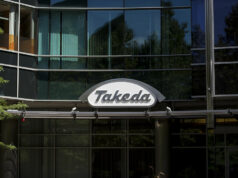
We are not free and clear of the Covid-19 crisis even as cases and deaths have dropped. Vaccine distributions have begun in full swing across the nation, but there is still a worry about future surges with new variants of the SARS-CoV2 virus that are now in the U.S.
This means that there are steps hospital and healthcare system leaders can take today to ensure the doctors, nurses, administrative staff and others who work in their facilities are best protected should cases begin rising again. This is especially critical as nurses across the country protest working conditions as their safety concerns related to Covid-19 are left unaddressed.
Beyond just the pandemic, providing a sustainable and safe work environment is of paramount importance to the well-being of the doctors and nurses who provide critical care. By implementing better safety plans and leveraging communication tools, healthcare facilities can make strides toward reducing the impact of the pandemic on their staff.
Establishing emergency response and safety plans
Long before the coronavirus came into play, healthcare was an industry riddled with risks, and facilities need to implement appropriate response plans in the case of emergencies. Workplace violence is four times more likely to occur?in a healthcare setting than other private industries, and 96% of male nurses and 85% of female nurses have been physically threatened by their own patients.
With the response to Covid-19 already stretching hospital staffs thin, it’s important to ensure emergency plans are in place for every scenario—whether a fire, act of violence or severe weather incident—that could add additional strain. As part of those plans, the correct lines of communication must be in place to ensure staff, patients and visitors are informed and 9-1-1 and first responders have the most context possible before arriving to provide assistance.
When developing or updating emergency plans and processes, healthcare leaders should look for tools that enable them to collaborate across all stakeholders involved in a response, especially as some members of those teams may be working remotely, and ensure incident response is run properly according to organizational standards, as well as state and local coronavirus guidelines. For healthcare systems with multiple locations, these solutions can help ensure consistency in response across facilities and capture information about how the response was handled so improvements can be made moving forward.
All emergency plans—coronavirus-related or not—should be made available to employees through online portals or apps, in addition to being posted or printed within facilities. This gives employees the opportunity to become familiar with the plans, understand how they should react in any given situation and feel confident that their safety is a priorty.
Take advantage of communication tools
Safeguarding hospitals and health systems with the tools necessary to communicate quickly with staff, patients and even visitors—whether about Covid-19 or another crisis—can provide them with the information they need to stay safe and operate efficiently.
Communication tools like mass notification systems, anonymous tip solutions and mobile panic buttons are critical to the efficient distribution of information and keeping facility leaders informed so they can make the best possible decisions for the hospital community.
Anonymous tip solutions are one way doctors, nurses and healthcare staff can take control of their own safety. There is evidence that respondents would be more likely to report a safety issue if they could do it anonymously. With mounting frustration over the handling of their Covid-19 safety concerns, this channel would allow everyone within a hospital network to raise issues related to staffing, availability of PPE, compliance with social distancing and more.
Speaking of staffing, conducting daily health check-ins and polling hospital and facility staff about their availability can help ensure adequate coverage for all departments, as concerns mount over understaffed facilities. These check-ins also provide an opportunity for administrators and managers to quickly identify staff who may be experiencing Covid-19 symptoms and fill their shifts appropriately.
By opening up lines of communication with hospital and healthcare facility staff as part of established emergency and safety plans, those charged with the well-being of doctors, nurses and all who work within healthcare systems can make strides toward better protecting those playing the most critical role in Covid-19 recovery.
Photo: marchmeena29, Getty Images








